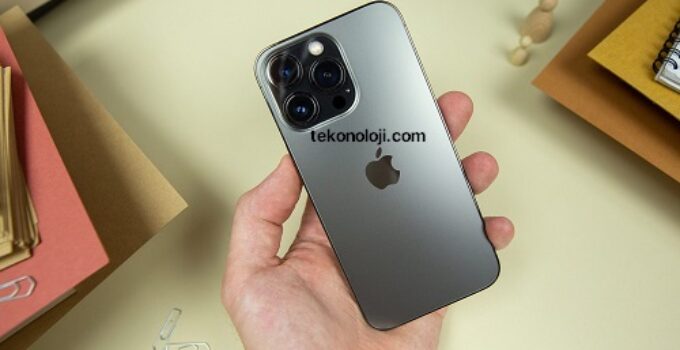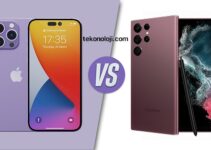IPhone 14 Pro review: hardware evolution, software genius. The dynamic island is just the icing on the cake. The new iPhones “Pro” have been enhanced in hardware and camera.
How to activate custom spatial audio on AirPods?
iPhone 14 Pro and iPhone 14 Pro Max represent the pinnacle of Apple’s smartphone evolution. This year the most impactful novelty is certainly the dynamic island, but there are less visible but equally important improvements such as those related to the processor and the camera.
Design – iPhone 14 Pro & Pro Max
The design of the iPhone 14 Pro and iPhone 14 Pro Max remains substantially unchanged from the past, with the exception of the replacement of the notch with the dynamic island and the introduction of a new purple color, the one we tested. The dynamic island is not a mere component of aesthetics, but it revolutionizes the experience of using the iPhone in a more important way than one might expect.
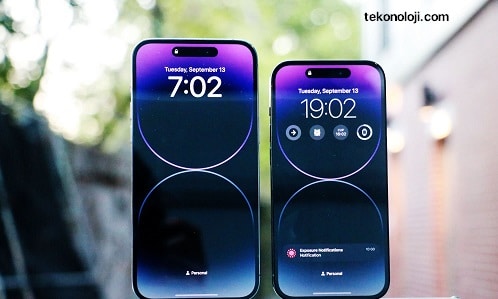
Let’s face it: the dynamic island was born as a technical expedient to better hide the elements of the camera and Face ID that, to date, could not be hidden under the screen. The genius of the Cupertino software engineers was to transform a passive and disturbing element such as the notch into an active and usable element. The choice, however, proved to be brilliant: now not only has the usefulness of that area of the screen changed (in fact interrupted in the past by the notch) but iOS 16 does its best to make the dynamic island also pleasant to watch in action.
Dynamic island – What is it for?
Currently, the dynamic island acts as an advanced status indicator: do you know the old Android that notified certain activities simply by turning a front LED on and off? Here you are. Apple has waited centuries, but the implementation of the dynamic island solves this lack, benefiting among other things from a sensational software depth. Will you connect the AirPods to the phone? The dynamic island will notify you and, by pressing it, you will be able to find out the level of autonomy of the headphones, read their name and see a preview of the model.
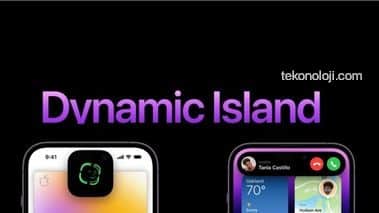
Will you send a file with AirDrop? Here, too, the island will notify you and you can follow the progress of the shipment. Will you need to access a protected note? Face ID will pop out of the island to authorize access. Will you charge the phone? The dynamic island will show you the state of charge and the battery percentage. Track being played? You can manage the playback from the dynamic island through a special mini-player.
What we see today is also just the tip of the iceberg: between the application updates and the improvement of iOS with future updates, the dynamic island can only be exploited better. We are very curious to follow its evolution and we are confident that it will become an essential component of the user experience offered by the iPhone in the coming years.
Screen
The screen of the two iPhone 14 Pro does not change in size: 6.7 inches for the largest model and 6.1 inches for the smallest are confirmed. Dimensions to which users are now used to and which would make no sense to change, especially in the year of farewell to the notch. Indeed this year the novelty lies precisely in the uniformity of the lineup on these dimensions: by disappearing the iPhone “Mini” and making room for the “Plus”, Apple this year offers two types of iPhone in the same size, clearly with the Pros that have an advantage in hardware and beyond.
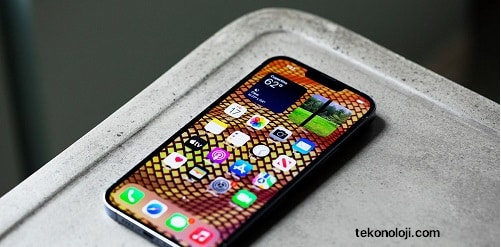
Speaking of the advantages of the Pros, one above all is once again the screen. In fact, the OLEDs of the high-end models support ProMotion technology, capable of varying the refresh rate of the devices from 1Hz to 120Hz. This technology, absent on standard models, becomes even more important this year due to the introduction of the Always-On screen. The implementation was also brilliant here: rather than just displaying the time and some status icons, the screen of the iPhone 14 Pro and iPhone 14 Pro Max remains essentially active as if it were really on, but reduces its brightness up to at 1Hz in the lowest light conditions.
Always-on too bright?
In some cases it may seem that the screen remains too bright, but over time you get used to it. In any case, we would like to point out that the AOD screen can still be deactivated and this deactivation will take place automatically when the energy saving mode is activated. A practical solution to disable it when we do not need it, but in this case it will also lower the refresh rate of the screen to “only” 60Hz.
If necessary, the screen of the iPhone 14 Pro can also become very bright, reaching a peak of 1000 nits. Readability in direct sunlight also seems to have been improved, with the screen reflecting less and surprising for a visibly higher brightness than that offered by the iPhone 13 Pro. Speaking of outdoor visibility, the dynamic island might be able to perceive it in some situations not as a block but as two separate elements (Face ID sensors and camera, with the OLED “off” around) but you really have to really put a lot of effort into it.
Hardware – A16 Bionic

The biggest novelty of the iPhone 14 on the hardware front is the introduction (only on Pro models) of the A16 Bionic processor, an evolution of the A15 Bionic that we found throughout the iPhone 13 line and that we continue to find also on the iPhone 14 and on the iPhone 14 Plus. It’s a school upgrade that on paper should guarantee 20% higher performance than the A15 Bionic. An increase that is far from simple to verify in the daily use of the smartphone but which at the same time will be useful in a few years, perhaps with the arrival of particularly demanding iOS updates.
The memory cuts also remain unchanged: it starts from 128 GB and you can get up to 1 TB of memory on both models, 14 Pro and 14 Pro Max. A new function called “accident detection” is introduced which uses sensors available to the iPhone to understand when the user is involved in a serious car accident. In this case, the phone will alert the emergency contacts and call for help. A function that we hope to never use, but which at the same time is nice to know that it is there in case of need.
Connectivity & Audio – iPhone 14 Pro & Pro Max
Connectivity on the iPhone 14 Pro remains unchanged from last year. We always find compatibility with 5G networks with a very good number of supported bands, WiFi, the use of E-SIM and now also satellite connectivity for emergency calls where the GSM signal is not available. In the United States (not in Italy at the moment) the SIM card has also been completely abandoned in favor of a solution based solely and exclusively on E-SIM.
Although on paper no changes have been made on the audio front, in our tests we were able to verify a slightly higher maximum volume level on the iPhone 14 Pro Max compared to the iPhone 14 Pro Max.
Camera
iPhone 14 Pro and iPhone 14 Pro Max introduce major changes for the camera. Meanwhile, the main sensor is now 48 megapixels, but above all, several software optimizations are introduced to improve shots and videos. First of all, Apple introduces the new “Photonic Engine”, responsible for a significant improvement in shots in the dark. In fact, now the iPhone is able to acquire more light during shooting, reducing the duration of exposure in night mode under the same lighting conditions. This, however, means that in conditions of total darkness and with particularly long exposures (from 10 seconds upwards) iPhone 14 Pro and iPhone 14 Pro Max will be able to make a difference compared to iPhone 13 Pro, capturing much more light.
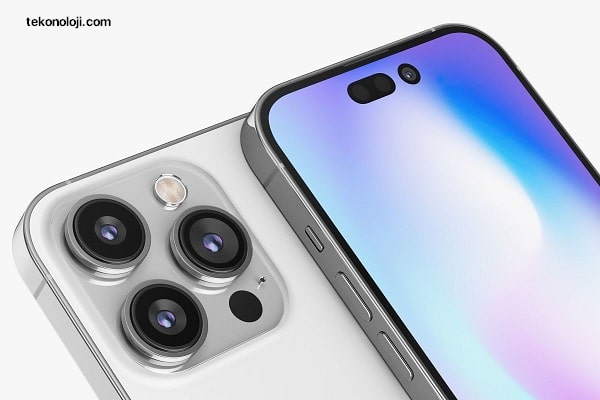
On the video front, we find the possibility of capturing movies in cinematic mode even in 4K at 30 or 24 fps, as well as the new action mode for videos that stabilizes the footage as if we were using a gimbal or an action camera. This last function, however, requires good light to have satisfactory results, otherwise it will be possible to notice its intervention on the final clips. It should also be noted that the default camera for this type of video capture will be ultra-wide, less bright and defined than wide, but able to compensate for the reduction in the field of vision due to the use of action mode.
However, we were particularly surprised by the new front camera, now equipped with autofocus. This guarantees solo and group selfies always in focus, but above all it allows you to capture photos with a decent depth of natural field. The same goes for videos and we were surprised by the minimum focus distance of the FaceTime camera that allows us to get really close to the details of the face.
Battery
How long does the battery last on the iPhone 14 Pro and iPhone 14 Pro Max? Consumption in our tests was in line with last year’s models, although some considerations need to be made. On the one hand we analyzed the consumption of the iPhone 13 Pro, slightly affected by iOS 16 and which in any case have now a year of life behind them, and on the other hand there are the iPhone 14 Pro which are very fresh from unboxing but still have an element which contributes, albeit a little, to consume battery: I’m obviously talking about the always-on screen. However, the impact remains minimal (I estimated it at around 5% at the end of the day) and therefore negligible.
Charging is always possible via the classic wall power supply (not included in the package) connected to the USB-C / Lightning cable or to a practical MagSafe base. The charging speeds have not changed, however, which remain slightly below those offered by the competition but which, at the same time, guarantee better battery life over time.
Prices & Conclusions – iPhone 14 Pro & Pro Max
iPhone 14 Pro and iPhone 14 Pro Max are the highest point reached to date by Apple in the smartphone field. These devices have only one flaw: they cost a lot, perhaps too much, and it is a real shame because for many they will remain a pipe dream or achievable with great sacrifices. In fact, it starts at € 1339 for the 128 GB iPhone 14 Pro, while the Pro Max requires € 1489 for the same 128 GB version. The 1 TB iPhone 14 Pro Max even surpasses the psychological hurdle of € 2,000 and is positioned at € 2,139.
Really a lot, net of the evolution of the dynamic island (which I particularly appreciated) of the new A16 Bionic chip and the improvements related to the camera. Then we know, the Italian price list is, as always, spoiled by our country’s own taxes and by the macroeconomic situation we are experiencing, but nothing would have prevented Apple from at least partially filing the proposed prices. Also because the increase was around € 300 on each model. Not exactly a few cents.
The fact is that the prices of “the best iPhones ever” this year are these. Like it or not, whether you think it is fair or not. The prices (very high, I repeat) must not, however, become a reason to discredit a product that has been profoundly renewed in its essential elements and that presents a new element, the dynamic island, which will mark a change of course for Apple as it was not seen by the times of iPhone 8 and iPhone X. Waiting for notches and islands to disappear completely, at least.
